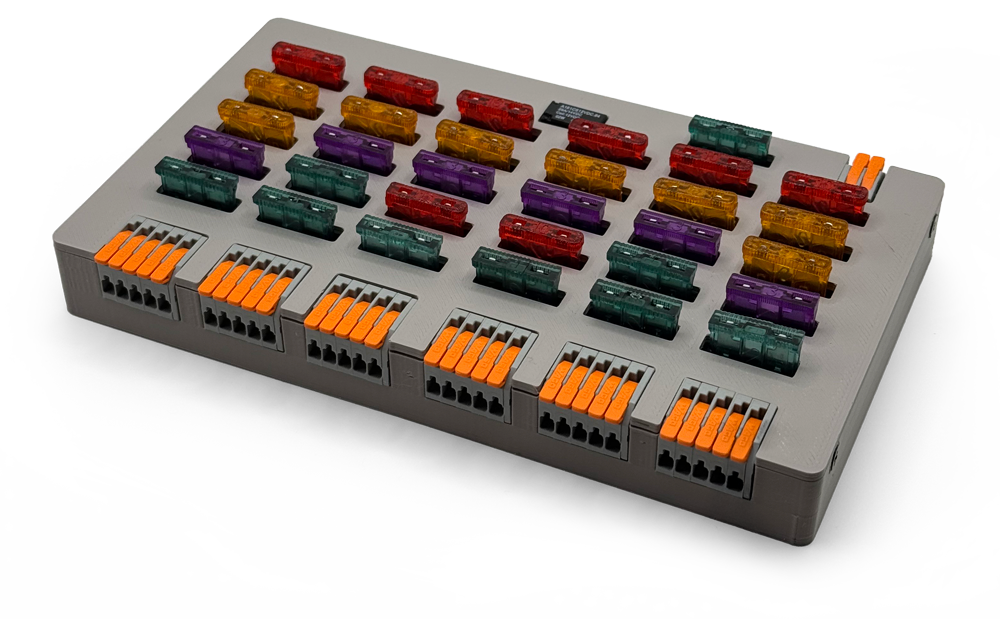Ironically, you might think, I waited until the very last minute to get ADS-B Out installed (well, re-installed) in my RV-6A. The RV arrived back in 2017 with a Dynon system which included Dynon’s (which is actually Trig’s) Mode S transponder. Within a few weeks I swapped out the standard GPS for the 2020-complaint version (SV-GPS-2020) and was fully legal. That worked great until this past summer when I went and ripped everything out to install FlightView. Transponder integration was a long way down the FlightView feature list, so I punted and installed an old but reliable Garmin GTX-327.
Late this fall I finally got around to working on the transponder. It turns that it uses a rather complex low-level protocol called TMAP which both configures and remote controls the transponder. Fortunately, I have friends who are much smarter than I am. With a huge amount of help from Eugene (thanks, Eugene!) I managed to put together a working TMAP implementation. It allows FlightView to do all the transponderish stuff you would expect: squawk, ident, switch from standby to altitude mode. Exciting stuff. So that took care of the transponder requirement. Unfortunately, getting the ADS-B Out feature working was not so straightforward.
The Dynon GPS meets the performance requirements of the 2020 mandate. So does the Trig TT22 transponder. And they work together beautifully in an all-Dynon system. Unfortunately, it’s a bit of a challenge to get them to work together without the Dynon EFIS. The GPS operates at 8 volts (weird) and communicates at 115,200 bit per second (sounds fast, but it’s not). The Transponder operates off of standard ship’s power (12v – 28v) and communicates with the position source at a maximum 38,400 bits per second. The transponder is built to communicate directly with a 2020 position source, and does in many installations. Unfortunately, not in Dynon installations. In a Dynon install, the EFIS acts as a bridge between the GPS and the transponder. It digests the data from the GPS and pushes it to the transponder using the aforementioned TMAP protocol.
Ok, so under ordinary circumstances that would be fairly easy to replicate, but unfortunately the GPS includes one special message that tells the receiving gear (transponder or EFIS) the current accuracy and integrity of the position fix. That message is, unfortunately, proprietary. You need the documentation from the GPS chipset manufacturer to know how to decode the accuracy and integrity information in order to pass it along to the transponder. Without the details on that message you can’t know the accuracy / integrity. Ouch.
Ok, so the transponder also supports a direct RS-232 connection to a position source. The FlightBox can bring the data from the GPS in at 115,200 bps and spit it back out at 38,400 bps. All it takes is a pair of RS-232 adapters and two available USB ports – not a problem, right? Well, it turns out that it’s not at all hard to do but there’s still one small snag: the transponder firmware apparently doesn’t speak the GPS dialect used by the Dynon GPS. At least not with the firmware it has now. It almost works. It sends out ADS-B squits* with the correct position data, but without the all important integrity value. Without acceptable integrity data the towers ignore your squits and you’re not compliant.
By the time I figured all of this out it was late December. Time for Plan B, which in this case was to install an EchoUAT transceiver. The Trig would stay, but would be relegated to doing only basic transponderish stuff. The ADS-B function would be handled by a tiny black box from uAvionix. The Echo, fortunately, speaks a wider variety of GPS than the Trig, including the dialect pumped out by the Dynon. It’s also very simple to install – just power it up, configure it using a mobile app, and away it goes. It reads the squawk code and altitude inductively via the power connection, so all it needs is the feed from the GPS. The one down side: it can’t share an antenna with the transponder. Fortunately, I had a second transponder antenna that I was using for ADS-B In.
I finished the installation and the ground tests just after noon on December 30th. A half hour flight around the Santa Clara valley was enough to generate a passing PAPR report. I would estimate I spent at least 100 hours coding and burned at least 20 gallons of av gas trying to get this right. Not the most efficient path to ADS-B compliance.
Eventually I intend to revisit the Trig, as I would like to be able to use the second antenna for ADS-B In functions again. I think (and please speak up if you know) that the trick might be getting the transponder firmware updated, something which requires the assistance of an authorized Trig dealer. A more recent update added support for the Trig TN72 which is rumored to use same chipset as the Dynon SV-GPS-2020. If anyone knows the detail, please post a comment.
Transponder control isn’t one of the sexiest FlightView features, but it is nice. Getting the TMAP driver working is a good first step. At some point I hope to add support for other transponders including the Sandia STX line and possibly the Garmin GTX models if I can figure out their protocol.
* No, squits are not some unfortunate digestive condition. ADS-B is “automatic” – meaning the transmitters don’t require an interrogation but instead send out an update known as a “squit” once per second. The ES in 1090-ES actually stands for “Extended Squitter”.
